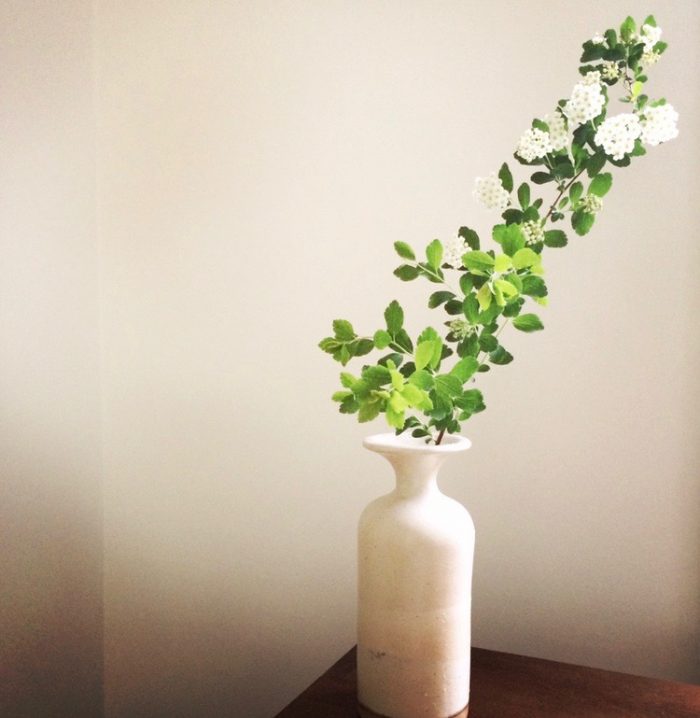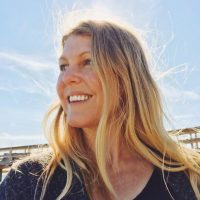One of the hardest aspects of my work as a life coach is also the most meaningful to me: sitting with another person in their grief. Sometimes the balm of witnessing, holding steady, not rushing the other person through their darkness or insisting on a silver lining is more healing than anything I could say with words.
Sometimes we’re working with grief intensively in our lives. Falling asleep in its mournful arms and waking to it like the dawn. Stepping from the bed and testing the day the way we feel for the floor. “Is it still there? Has it shifted?” And then we feel it as our consciousness slowly opens again to full aperture and the day begins. “Nope. There it is. That heavy feeling. That horrible sadness.”
Once a bird flew into the house and we left the door open but she wouldn’t go. All day long we kept trying to encourage her. We scattered bits of rice on the floor leading to the open door and then out to the back patio. A few times she flew near the opening but it seemed like she couldn’t figure out how to go through, how to be free.
Grief is like this. Like a stone we have to pass through our bodies or a cut we have to nurse until it scabs over and then scars. Like a dose of medicine we have to swallow or a long walk to the gas station after the car has broken down. We endure our grief. We hold the door open. We ask it, please, to just fly out us, across the backyard, toward the hills where we can’t see it anymore. Where we won’t have to see it anymore.
But I think of these really complex aspects of healing, like grief and forgiveness, more like doing the dishes. They’re not events or destinations. They’re ongoing processes we must devote ourselves to lovingly if we want our lives to work. Throughout the day we grab a dish, eat off it, scrape the crumbs into the trash and then wash the dish and set it to dry. The kitchen is only ever temporarily clean just as the body is only ever temporarily hungry or full. Soon we’ll reach for that clean dish again. We’ll make it dirty. We’ll wash it. We’ll set it back in the cupboard. Reach for it later. These are cycles of life. They support our living. Being with our grief and giving ourselves the space and support to process it is the same.
Healing is not linear. We might go through swaths of time where we feel better. We might tell ourselves we’re “ok now”. And then without warning we can be completely blindsided by grief. A feeling of autumn in the wind. A Facebook invitation to look back on where we were a year ago. A bad dream. Disappointing news. The peonies returning. A song on the radio. As long as we are living we are vulnerable to feelings we can’t always direct, predict or control.
When we are caught off guard by grief and we apply linear thinking to our experience we tend to feel we’ve just rolled back down to the foot of the mountain. This is a way of creating double suffering for ourselves. It intensifies our sense of loss when we imagine that we were at the summit and now we’re at the bottom and we have to start climbing all over again. This makes the idea of healing feel daunting and impossible.
What if, instead of being the climber in various stages of hiking the trail, we’re the mountain itself? What if we’re that metaphorical magnificent, miracle of elevated land wrapped in fog some days or illuminated by spring sunshine? Home to all of the creatures who share our existence, taking and giving to us? Steady in the face of changing weather and shifting seasons?
What if there is nothing to climb just someone to be? What if there is nothing to fix just something to feel? What if we allow ourselves to trust our grief? Trust that if we step into its waters it will not drown us; it will hold us. Trust that if we dive under the surface of it we will reach a bottom to push back off of. We will swim back to the ladder and pull ourselves out again. We will dry in the sun just like wet dishes. We will get dressed and head back into our lives.
And we will return to our grief but we will return to our lives, ourselves, as well. With a renewed sense of strength and resiliency every single time. In this way, we make the orientation of our healing about growing the muscle to get in and out of the water as needed; not to avoid the currents altogether.












Read 0 comments and reply